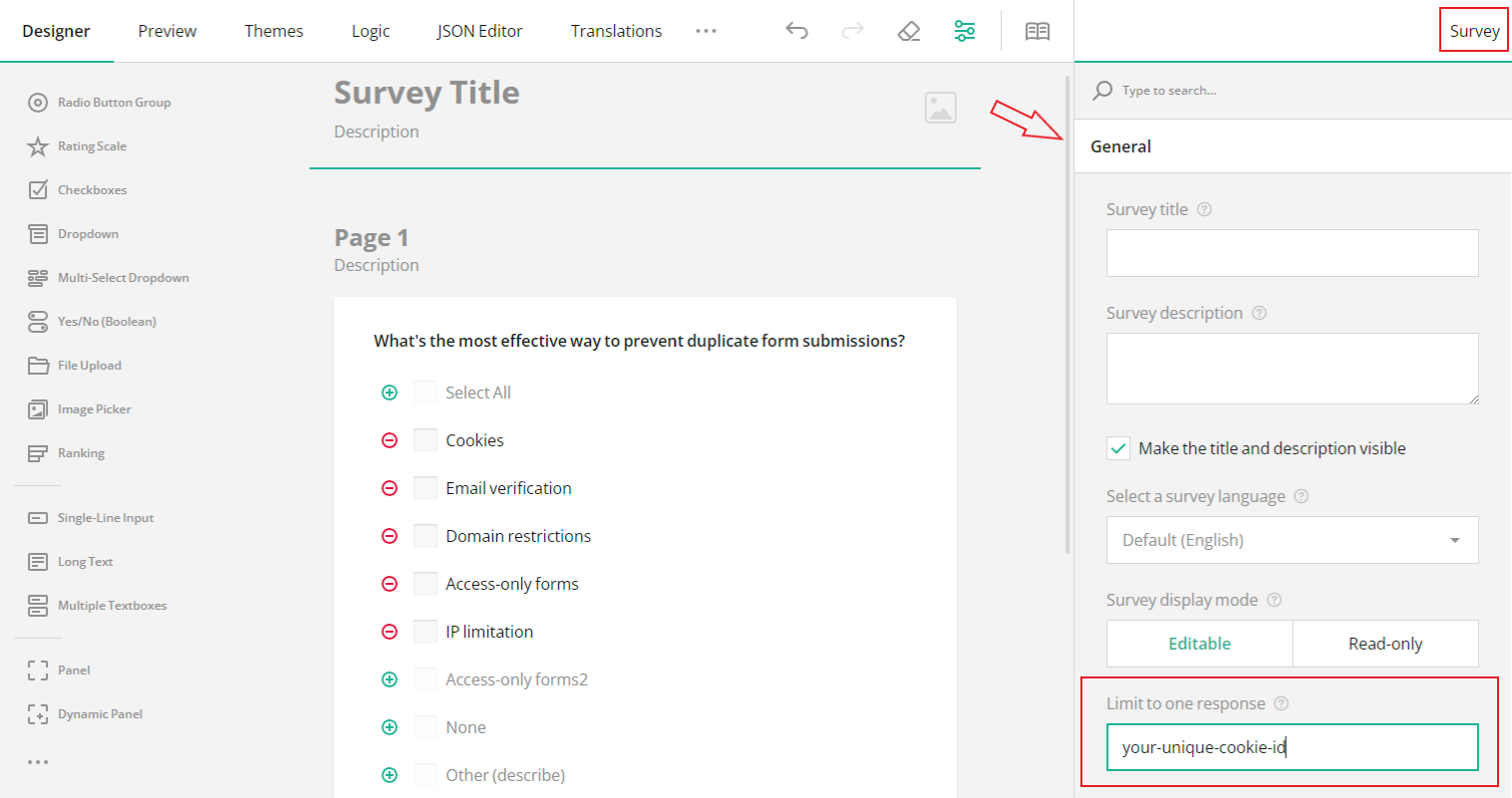How to Prevent Multiple Form Submissions
Ensuring the integrity of responses is crucial for obtaining accurate data and valuable insights. Duplicate submissions not only distort the results but also waste resources and time. Fortunately, tools like SurveyJS allow you to implement measures to prevent multiple form submissions in just a few clicks. In this article, we will discuss various methods for preventing users from submitting the same form multiple times, including email verification, domain restriction, code verification, and cookies.
Importance of Preventing Duplicate Submissions
Duplicate submissions can distort survey results, leading to inaccurate data analysis and potentially flawed conclusions. It undermines the credibility and reliability of the survey findings, rendering them less useful for decision-making processes. Moreover, it inflates response metrics, giving a false impression of engagement or interest. Thus, implementing mechanisms to prevent duplicate submissions is crucial for maintaining the integrity and accuracy of survey data. One of the most common ways to prevent respondents from submitting duplicate surveys is to use cookies.
How Cookies Help Stop Duplicate Submissions
Cookies, small pieces of data stored on users' browsers, serve as effective tools for preventing duplicate survey submissions. When a respondent submits a survey, a cookie can be set to flag that particular browser, indicating that the survey has already been completed. Subsequent attempts to submit the survey from the same browser can then be intercepted and blocked based on the presence of this cookie. This mechanism ensures that each respondent can only submit the survey once from a given browser, preventing duplicate submissions without inconveniencing the user.
In SurveyJS Form Builder, to prevent multiple form submissions from the same user, form creators can easily assign a unique cookie value to their surveys or forms using the "Limit to one response" property available in the survey-level settings.

However, it's important to be aware of the limitations of using cookies to prevent duplicate survey submissions. Since cookies are stored on the user's device, users can easily delete them from their browser settings or disable cookies altogether, which would allow them to bypass the prevention mechanism. Additionally, if a user switches to a different device or browser, the cookie tracking mechanism won't work either, potentially allowing multiple submissions from the same user.
IP Limitations vs Cookies for Preventing Duplicates
Another approach to prevent duplicate submissions involves imposing limitations based on IP addresses. However, this method is even less reliable compared to using cookies. IP addresses can be dynamic and shared among multiple users, especially in settings such as offices, schools, or public Wi-Fi networks. As a result, relying solely on IP limitations may inadvertently block legitimate respondents or allow duplicates from different users sharing the same IP address. Cookies, on the other hand, offer a more precise and user-centric approach, ensuring that each respondent can only submit the survey once from their specific browser.
Server-Side Validation and Tracking
One of the most effective and reliable ways to prevent multiple form submissions from the same user is to implement a server-side validation and tracking mechanism. This approach ensures that the validation and tracking occur on the server side, making it more difficult for users to bypass the prevention mechanism compared to client-side methods like cookies.
Server-side validation and tracking mechanism allows you to authenticate a user before they proceed to filling out the form using a unique user ID generated for each user in a system. The information you choose to use as a user ID can vary depending on your application and its requirements. The common user IDs include the following:
- A user-selected or system-assigned username
- A user's email address associated with their account
- A user's phone number
- Social Security Number (SSN)
To implement server-side validation and tracking:
- Verify a user in your system using email or code verification.
- Generate a unique user ID for each form submission.
- Store the ID along with the form submission data on the server side (in a database or session storage).
- Before processing a new form submission, check if the ID associated with the user's previous submission exists in the server-side storage. If the unique identifier and its form submission are found, prevent the new form submission from being processed.
- Display an error message in the user verification section of the page, informing them that they cannot proceed with a new form submission because a duplicate submission has been detected.
Because the unique identifier is tied to the user's data (email address, SNN, phone number, etc.) rather than a specific device or browser, server-side validation and tracking mechanism enable consistent tracking across different devices and browsers used by the same user.
Conclusion
In conclusion, preventing duplicate survey submissions is essential for maintaining the integrity and reliability of survey data. Cookie-based duplicate form submission prevention is a user-friendly solution to this challenge as it doesn't require any additional effort from a user; however, it comes with its own set of limitations and drawbacks, just like the IP limitation mechanism does.
By implementing a server-side validation and tracking mechanism, you can effectively prevent multiple form submissions from the same user and minimize the risk of bypassing the prevention mechanism, which other methods are prone to.